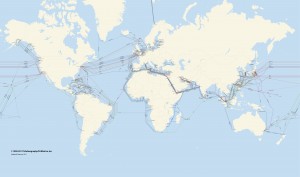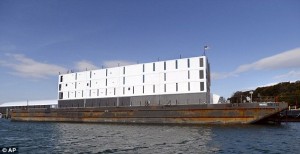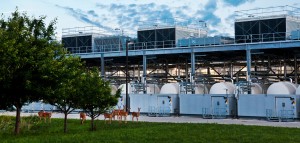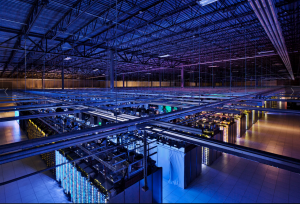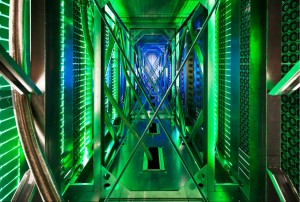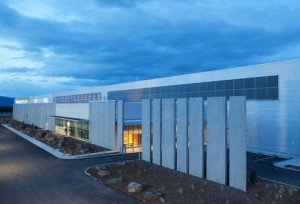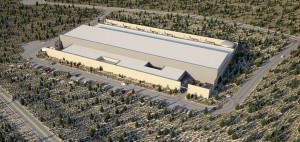Every time, as architects, we focus our attention on things around us, on the complexity of precesses that build our analysis system, we refer to elements and datas collected by experts who elaborated them. These data are useful because they enrich our projects and let us modify and play with the evolutional sequences of events and relations of the environment.
Today, most of the datas that we need, are available on line; internet has totally disrupted the analytic process which is the base of every design intervention, at small or urban scale. Design’s value exists thanks to the choice that we know, more they are coherent and agree with different factors (i.e. economic, environmental, relational…), more the project will positively influence the condition of the existing site.
Gathering that I asked myself: if we base a really important part of our design process studying datas that we found on the net in order to use them to design more sustainable and advanced project, which is the net’s architecture? Which are the ways that let us connect with the world? Are they sustainable or not?
Our necessity to share information induced the growth of a big infrastructure made by submarine cables that wrap the whole planet creating a great network
This physical, tangible network spreads throughout the globe which stores memories, words, images and actions already represents two percent of the world’s electricity use. Therefore the way that allow us to improve our knowledge and made better projects actually has a considerable impact on the environment, both energy and environmental because of its setting in submarine’s habitat.
Our necessity to research and share datas give birth to a proper industry supported by the need to own –so buy- devices to receive, develop and share datas. But this is not just an industry, is a fundamental transition in the history of knowledge. Over the last decade, scientific and academic institutions, government departments, and organisations that are forging new languages for communication have had a growing sense that behind the data explosion lie new ways of solving problems and formulating questions that will lead us to radically rethink how science is practiced, how value is generated in the economy, and how we organise ourselves politically and particularly as a society
Two of the most famous networks that changes our way of sharing and collecting datas are Google e Facebook.
Assumed that, according to the energetic consumption, network infrastructure is “not-sustainable”, how did the architecture support this revolutionary changing at urban scale? Were the solution as much innovatory? Did they respect the environment or they were designed merely as datas’s machines containers?
Something that we can assume is that data centers are typically shrouded in secrecy because they are the brains behind tech companies.
One of the first solution for data-centers were to put the shipping containers welded together atop a large flat barge.
Also if not declared this first non-building solution was adopted by Google which built in America his prototype floating data centers using the ocean’s water to regulate the intense heat put out by the mass of servers.
These floating platforms are described as an environmentally-friendly sea-powered telecommunications and storage system whose look like the vessel in which are installed high-tech equipment.
Google’s patent describes ‘a system includes a floating platform-mounted computer data center comprising a plurality of computing units, a sea-based electrical generator in electrical connection with the plurality of computing units, and one or more sea-water cooling units for providing cooling to the plurality of computing units.’
This solution has the only purpose to provide the access to abundant water that helps cool the large number of servers stocked together.
But this is only one typology. Google own different data-canters: Google’s data center in Council Bluffs, Iowa; Oregon data center; Douglas County, Georgia; Google’s data center in Finland.
Google’s “physical internet” buildings are efficient, take advantage of renewable energy, and are as environmentally friendly as possible.
But what about the other industry of communication? Facebook has recently built its new center which is one of the most energy-efficient data centers ever.
Facebook’s Prineville Data Center has a simple and minimalist design, similar in spirit to the social networking giant’swebsite. The center of one of the most important comunication’s platform is expected to be close to a really important city but actually has no relation with any city landscape: the only relation is with his surroundings. The building, which exterior is clad in nearly 50,000 square feet of Metal Sales T2630 wall panels that perfectly complement its neutral-colored concrete is totally integrated with Prineville’s enviroment.
According to the energy requirements the façade of the building is made by panels selected for their reliability and sustainability, they’re joint together in order to build a clean and functional façade for the energy-efficient structure housing tens of thousands of Facebook’s servers, containing infotmation.
Aluminium panels create a screen wall that provides controlled access to the yard; the panels have a custom perforated pattern to facilitate ventilation for the diesel-fueled generators. Given the specific requirements for the LEED Gold structure, quality materials were needed to meet performance and functionality expectations.
“This enterprise data center in central Oregon is designed around a 164,000 square foot computer equipment room topped with an innovative 100,000 square foot mechanical equipment penthouse. A 23,000 square foot office area organized around an interior courtyard and parking court adjoins the computer equipment room. This project was recognized by ENR as 2011’s “Best of the Best” and Editor’s Choice.“
According to this analysis it’s interesting to understand that, as this two examples explain us, the core of the industries of comunication, places fundamental for the life-state of the whole system, are the examples of the most efficient contemporary buildings.
These companies are focused on building the most efficient and functional structure, construct to be only an isolated container. These giant of the information prefer to set their most important buildings far from any context different from nature in order to strictly preserve their contents.
The deal for the future will be to integrate these system together, to improve the construction of efficient and self sufficient buildings ,with a really important role in our society and in our economy, to add them value to our cities.


